Could swift bricks help bird populations grow?
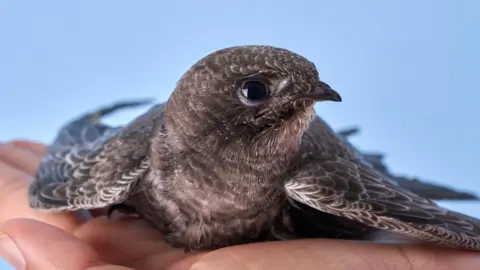 Getty Images
Getty ImagesIn the last 50 years, combined bird populations in the UK and England have declined by 16%. That is almost 73 million fewer breeding birds compared to 1970.
A government committee is due to consider an amendment to the Planning and Infrastructure Bill which could make so-called "swift bricks" - which provide homes for a variety of cavity nesting birds - compulsory in any new-build developments greater than 5m (16ft) in height.
Campaigners think the government will turn its back on nature over fears of being seen as "too woke" by those on the right of politics.
The Ministry of Housing, Communities and Local Government told the BBC: "We are unable to comment on the amendment at this stage, as this is still being considered."
In 2020, swifts were added to the UK's red list of birds at most need of conservation.
Their populations declined by 66% between 1995 and 2022.
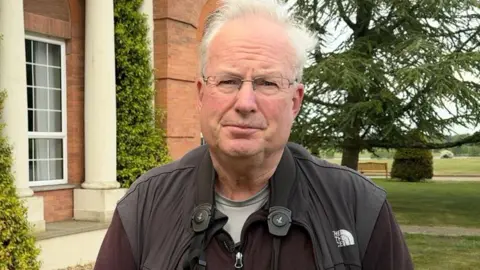
Keith Betton has been a birdwatcher for more than 50 years and is a member of Hampshire's Ornithological Society.
He said birds were currently struggling to cope with a change in climate and reduced insect populations.
"This is partly because they don't have enough insect food, we use a lot of insecticides these days," he said.
Mr Betton also urges anyone who has birds nesting on their house to let their local ornithological society know.
"We'll monitor them over the next few years to find out how they're getting on, and if we can, we'll try and help them out as well," he said.
According to the latest State of Nature Report - changes in the way we manage our land for farming, and climate change were the biggest causes of wildlife decline on our land, rivers and lakes.
Whilst Defra said bird populations have long provided a good indication of the broad state of wildlife.
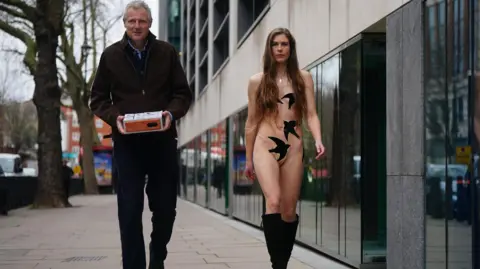 PA Media
PA MediaAmong conservation measures approved by wildlife experts are swift bricks which provide a cavity for swifts and house martins in new-build developments, and cost about £35.
As part of her campaign to introduce a law requiring all new-build homes to have at least one swift brick, Hannah Bourne-Taylor walked through London, twice, wearing only pants and paint with swift-themed designs.
But after support from Conservative Lord Zac Goldsmith - who first tabled an amendment to a previous planning bill - Mrs Bourne-Taylor fears Labour might turn down the amendment to this bill.
Mrs Bourne-Taylor, who live in Chipping Norton, Oxfordshire, but is originally from Sherborne in Dorset, said she thought it was out of fear of being seen as "too woke".
"I really hope the rumours aren't true but I've heard that Labour deem swift bricks, or anything to do with nature 'too woke' in the context of Reform polls shooting upwards," she said.
"Nature shouldn't be woke or anti-woke. It's just a crisis for the birds that we can easily solve."
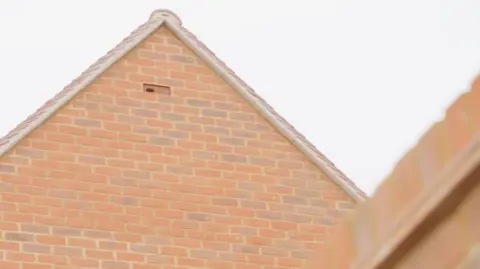 Cala Homes
Cala HomesA spokesperson for the Ministry of Housing, Communities and Local Government told the BBC: "We are unable to comment on the amendment at this stage, as this is still being considered."
"The National Planning Policy Framework already expects developments to provide net gains for biodiversity, including support for priority or threatened species such as swifts, bats and hedgehogs."
The planning and infrastructure bill still has two more sessions at the committee stage before it goes through to the commons.
Ms Bourne-Taylor said despite an amendment there were things we could and must do to help.
Swifts are not the only birds at risk.
According to the British Trust for Ornithology, the numbers of house martins have reduced by 44% over the past three decades.
They arrive in the UK in early spring - April and May - to breed, and then migrate south to Africa in the autumn.
"Many places where birds want to nest have literally been taken away," said Mr Betton.
"People very often clean away house martin nests off the walls of building.
"We need to do everything we can to help them have an easier time when they get here."
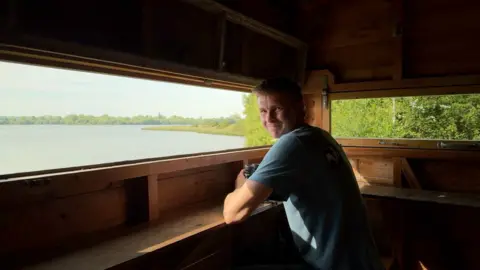
Blashford Lakes in Hampshire is home to an abundance of wildlife across its site, and at Ibsley Water, a new bird tower has been installed.
Jack Medley, a reserve officer for Hampshire and Isle of Wight Wildlife Trust, is one of the people behind the project.
"We identified this area as a really important place. Lots of potential for swifts and house martins."
They use the site already and forage over the lakes for an array of different insects, but Mr Medley said the only thing missing was somewhere for them to breed.
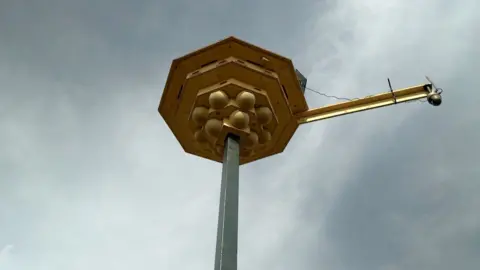
"They don't have to be on towers, people can put boxes on the side of their house. They can put these artificial cups on the side of their house as well," he said.
Mr Medley said he was worried about bird populations as they are part of the character of the UK and he believes everyone can play a part in making sure they are not lost.
"Whether it's putting up a box or helping out with some volunteering," he said.
"What can you do on your patch to make a difference?
"Everyone, if we can all work together, we can make a difference."
You can follow BBC Hampshire & Isle of Wight on Facebook, X, or Instagram.
